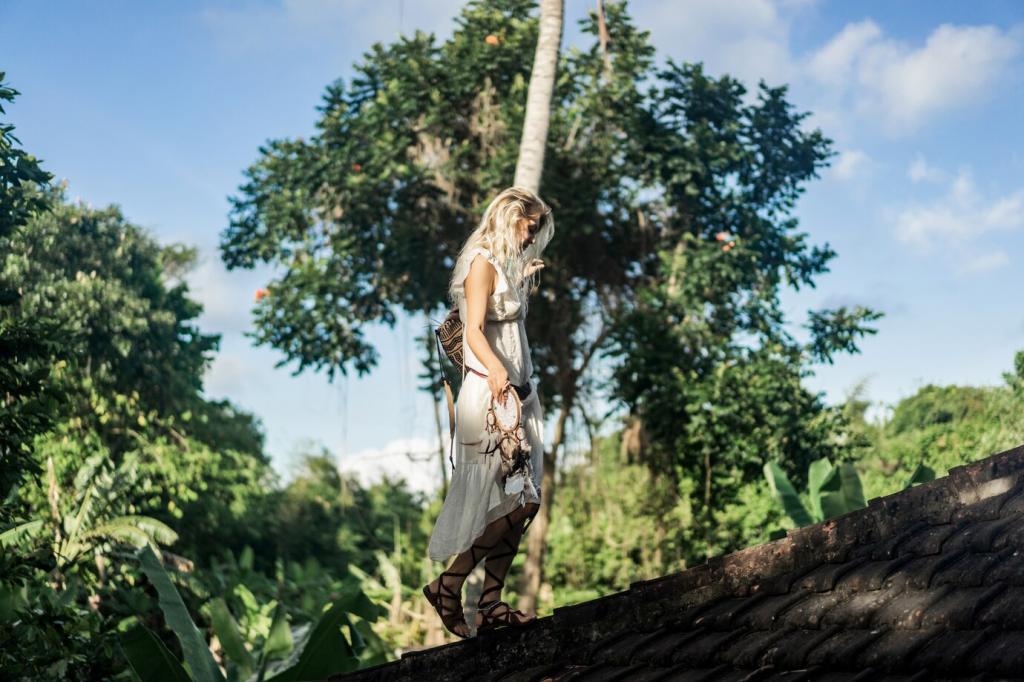Sustainable Fashion Trends Shaping the Future
Sustainable fashion is more than just a fleeting movement; it’s a transformational shift that is redefining the entire fashion landscape. As the global consciousness surrounding environmental and ethical concerns grows, both consumers and brands are embracing innovative ways to produce, wear, and recycle clothing. This new wave of sustainable fashion is shaping not only how individuals dress but also influencing supply chains, production methods, and industry standards. This page explores the major trends driving this transformation, offering insights into the cutting-edge developments and thoughtful approaches that are paving the way towards a more responsible and holistic fashion future.
Designers are increasingly adopting circular design principles to create garments intended for multiple life cycles. These principles encourage the use of materials that can be easily separated, repurposed, or recycled at the end of a product’s use. By considering a piece’s entire lifespan from the outset—right from raw materials to end-of-life—fashion brands are ensuring that their creations don’t end up as waste. Emphasizing repairability and upgradability, circular design challenges the throwaway culture that has dominated fashion for decades.

Bio-Based and Regenerated Fabrics
Bio-based materials, such as mushroom leather, pineapple fibers, and seaweed textiles, are gaining traction as viable alternatives to animal-derived or petroleum-based fabrics. Regenerated fibers, like recycled polyester and Tencel, are being used in collections ranging from mass-market to luxury. These materials often require fewer resources and produce less waste during manufacturing, making them attractive for environmentally conscious brands seeking to reduce their footprint.
Closed-Loop Textile Production
Closed-loop processes allow for the continuous recycling of textiles without loss of quality. Examples include chemical recycling of cotton or polyester, in which old garments are broken down and spun into new fibers. This innovation minimizes resource extraction and landfill waste, offering a promising solution to the global problem of textile disposal. Brands investing in closed-loop technology are signaling a dedication to sustainability that goes beyond surface-level changes.
Natural Dyeing and Low-Impact Production
Traditional dyeing and finishing methods can be highly polluting, so many modern brands are switching to natural dyes and low-impact processes. Plant-based pigments and water-efficient dyeing techniques are becoming mainstream, reducing the toxic runoff associated with conventional methods. Such innovations reflect a commitment to creating beautiful, durable products while safeguarding ecosystems—a crucial evolution as the industry seeks to harmonize creativity with environmental stewardship.
Ethical Production and Transparent Supply Chains
Fair Labor Practices
Fair labor practices mean more than decent wages—they encompass safe working conditions, respect for workers’ rights, and the empowerment of local communities. Brands committing to ethical manufacturing frequently spotlight their partnerships with trusted factories or cooperatives. This approach is reshaping industry norms by rewarding companies that prioritize people as much as profits, encouraging a new era of responsible fashion leadership.
Supply Chain Traceability
Transparency from field to finished product allows consumers to trace the origins and journey of their garments. Technologies like blockchain and digital passports facilitate this traceability, recording each step a product takes. Brands implementing such solutions are building trust, as shoppers are reassured that their purchases are both ethically produced and environmentally sound. This openness is fostering accountability and driving more responsible sourcing industry-wide.
Certifications and Standards
International certifications—such as Fair Trade, GOTS (Global Organic Textile Standard), and B Corp—serve as important signals of commitment to ethical and sustainable practices. These standards require rigorous audits and continuous improvement, holding brands accountable to high benchmarks. As awareness grows, consumers increasingly seek out certified products, making these seals of approval powerful drivers of positive transformation across the fashion ecosystem.
Conscious Consumerism and Mindful Shopping
The Rise of Minimalism
Minimalism advocates for buying fewer, higher-quality items rather than succumbing to the temptations of overconsumption. This philosophy encourages consumers to curate their closets intentionally, selecting timeless pieces that offer versatility and durability. As more people embrace minimalism, the fashion cycle slows down, allowing brands to design with purpose rather than speed, and resulting in a significant reduction in waste and overproduction.
Transparent Brand Storytelling
Storytelling is becoming a key tool for brands to communicate their sustainable efforts authentically. Through transparency about sourcing, production, and social initiatives, brands can cultivate genuine relationships with customers. Consumers are encouraged to engage more deeply when they understand a brand’s mission and practices, leading to more thoughtful purchasing and increased loyalty. Authentic storytelling thus serves as both a marketing advantage and a catalyst for industry-wide change.
Influence of Digital Communities
Online communities, forums, and social media platforms are empowering consumers to share experiences, insights, and recommendations related to sustainable fashion. These digital spaces provide education on best practices, highlight both ethical and dubious practices by brands, and unite like-minded individuals. As a result, they create powerful networks that drive change through advocacy and collective action, making conscious consumerism more accessible and influential.

Technology Advancements in Sustainable Fashion
Digital sampling replaces physical prototypes with virtual models, drastically cutting down on material waste and emissions from shipping samples. Virtual showrooms allow buyers and designers to explore collections remotely, reducing the need for travel and physical samples. This digital transformation streamlines the design process, shortens lead times, and lessens the environmental impact, all while maintaining creativity and efficiency.

Inclusivity and Diversity in Sustainable Fashion
Size-Inclusive and Adaptive Design
Fashion brands are expanding their size ranges and developing adaptive garments to cater to a broader range of bodies and abilities. By doing so, they challenge outdated standards and make sustainable clothing accessible to everyone. This forward-thinking approach not only widens the customer base but also signals a commitment to equality and authentic representation within the realm of sustainability.
Cultural Awareness and Heritage Preservation
Respect for cultural identity and craftsmanship is a growing priority in sustainable fashion. Brands are partnering with indigenous artisans and honoring traditional techniques, ensuring that heritage skills are preserved and valued. This ethical collaboration supports local communities and celebrates diversity, proving that fashion can be a force for both environmental protection and cultural continuity.
Breaking Stereotypes in Marketing
Sustainable fashion campaigns are shifting away from narrow, prescriptive beauty standards to embrace authentic representation. By featuring models of various races, ages, genders, and sizes, brands are building a more inclusive narrative. This change not only empowers underrepresented groups but also encourages broader participation in sustainable practices, showing that eco-friendly fashion truly belongs to everyone.
Localism and Small-Scale Production
Reinventing Local Manufacturing
Moving production closer to home helps minimize transportation emissions and supports regional economies. Local manufacturing enables traceability, faster response times to shifting demands, and better oversight of working conditions. Brands that invest in nearby production facilities not only lower their environmental impact but also foster transparent and resilient supply chains.

